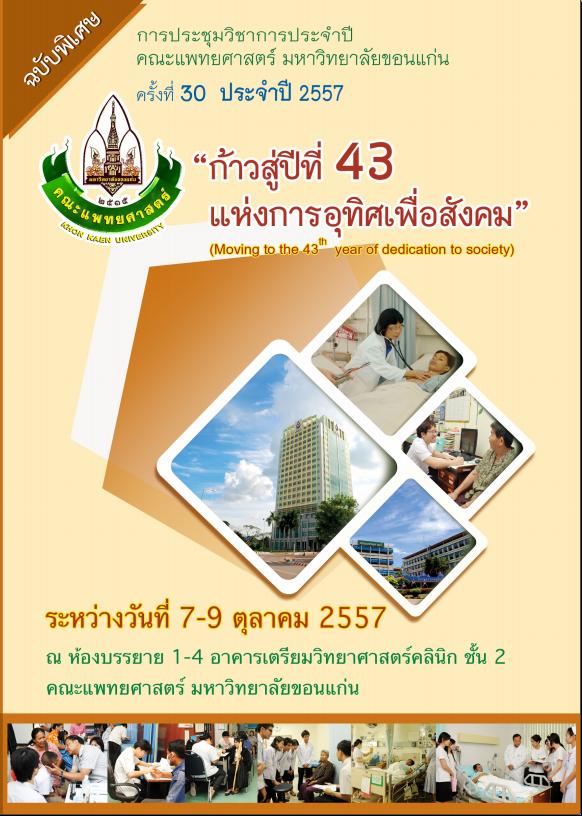Treatment Outcomes of Alpha thalassemia and Alpha- Beta thalassemia Coinheritance in Srinagarind Hospital
Abstract
Background and objective : Alpha thalassemia and alpha-beta thalassemia coinheritance are categorized as thalassemia intermedia. Blood transfusion was indicated when patients have severe anemia and/or overt ineffective erythropoiesis . Iron chelators were given when iron overload was indicated. This study aim to investigate the treatment outcomes and complications of alpha thalassemia and alpha- beta thalassemia coinheritance patients in Srinagarind hospital.
Methods: A retrospective and a cross-sectional studies were performed in patients aged under 18 year who were treated at least one year in the pediatric department in Srinagarind hospital.
Results: The total of 105 patients including 27 (25.7%) Hb H, 39 (37.1%) Hb H with Constant Spring (CS) and 39 (37.1%) Hb EA Bart’s disease were studied. The age ranged were between1 year 2 months to 18 years. The prevalence of impaired growth (height < 3 percentile) was 1/27(3.7%) in Hb H, 2/39(5.1%) in Hb H with CS and 5/39 (12.8%) in Hb EA Bart’s disease patients. Subclinical hypothyroidism was found 10% in Hb H, 6.2% in Hb H with CS and 4% in Hb EA Bart’s disease. Hypoparathyroidism was diagnosed in 10% of Hb H, 12.5% of Hb H with CS and 8% of Hb EA Bart’s disease. Gallstones were found in 3/39 (7.6%) Hb H with CS and 7/39(17.9%) Hb EA Bart’s disease. AIHA was diagnosed in 4/105 (3.8%). No evidence of chronic leg ulcer and diabetes mellitus were found in all patients. The mean age of menarche was 12.42 years in the female patients
Conclusions: Endocrinopathies and gallstones are needed to create appropriate preventive strategies.




